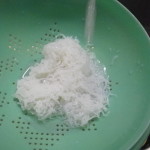Between low carb diets and the gluten-free craze, grains get a bad rap. Set things straight by teaching the truth about whole grains.
Whether you want to do a deep-dive webinar series, short Facebook or YouTube Live sessions, or a bulletin board display, we have the materials you need in our Whole Grain theme, including:
- Downloadable presentations that come with plenty of handouts:
Grains – What You Need to Know PowerPoint show and Grains are for Brains 2-show PowerPoint set) - Posters that also come with PDF handouts:
Whole Grain Illustration poster and Go For the Whole Grain poster - Colorful tearpads with real photos of grains:
Go For the Whole Grain color tearpad and All About Whole Grains tearpad - Grain give-aways:
Go for the Whole Grain Bookmarks and Stickers
What to teach? Here are some catchy ideas to get you started:
- Grain’s Anatomy: Teach the parts of a grain. Show how processing turns a healthy whole grain into a less-healthy refined grain.
- Make Peace with Bread: Explain how whole grain bread can fit into a healthy eating pattern. Discuss reading labels to find 100% whole grain bread and appropriate serving sizes.
- Name That Grain: Most people don’t know much about grains beyond wheat, oats, and rice. Show them pictures of less-familiar grains like quinoa, buckwheat, and farro and give tips on how to prepare them.
- Start Your Day the Whole Grain Way: Whole grains are a natural breakfast choice. Talk about the difference between instant oats and steel-cut oats, how to prepare overnight oats, and low sugar whole-grain cereal options.
Hollis Bass, MEd, RD, LD

Whole Grain Banner 24" X 67" on Stand
$125.00 $135.00
Add to Cart

Whole Grain Banner 48" X 36"
$88.00 $110.00
Add to Cart






